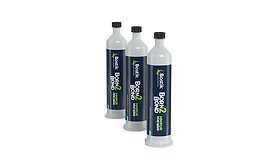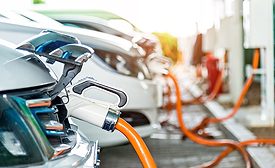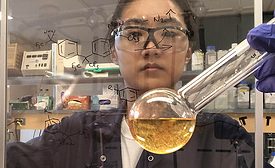Home » adhesives in assembly
Articles Tagged with ''adhesives in assembly''
The new versatile and single-component hot-melt polyurethane reactive range has been designed specifically for the manufacture of miniaturized handheld and wearable electronic devices.
Read More
IPC Reports Rising Material and Labor Costs Continue to Impact Electronics Manufacturing Supply Chain
Nine in 10 electronics manufacturers reported rising materials costs, and more than three-fourths reporting rising labor costs.
January 5, 2022
Ask Dr. Dave
Bonding Polystyrene to Glass
Can you recommend an adhesive for bonding a polystyrene part to glass for a consumer product? The adhesive needs some good strength, and it must be clear, cure quickly, and be easily used by relatively non-skilled operators. The final product will be used indoors and might suffer occasional impacts.
December 17, 2021
Study Finds Semiconductor Supply Chain Will Remain Vulnerable Without Robust Federal Investment in Advanced Packaging
Increasing silicon production without bolstering domestic advanced packaging capabilities is likely to lengthen the semiconductor supply chain because chips will still have to be sent abroad for packaging and assembly into finished products.
December 9, 2021
DuPont Breaks Ground on New Facility in East China
The facility will produce a range of materials to advance applications for electrification and lightweighting in support of growing demand for DuPont’s automotive adhesives.
November 22, 2021
Ask Dr. Dave
Bonding Polystyrene Foam
We want to bond sheets of polystyrene foam to steel and to wood. What adhesives would you recommend that will be effective and safe to use?
November 19, 2021
H.B. FULLER INDIA: Adhesive for Paper Straws
H.B. Fuller reports that this latest launch offers differentiated advantages in terms of sustainability, safety, and manufacturing efficiency.
November 16, 2021
Latex Binders, Lithium-Ion Batteries, and Electric Vehicles
Although binder adhesives are a small component of the lithium-ion batteries that power electric vehicles, they play a critical role in ensuring performance and efficiency while providing improved battery kinetics.
November 10, 2021
XLYNX MATERIALS: Molecular Glue
These adhesives reportedly make it possible to permanently adhere difficult-to-bond polymers to themselves and to other materials.
November 4, 2021
Addressing Sustainability in Disposable Hygiene Products
Adhesive manufacturers can partner with players all along the supply chain to reduce the environmental impact of single-use disposable hygiene products.
November 1, 2021
Keep the info flowing with our eNewsletters!
Get the latest industry updates tailored your way.
JOIN TODAY!Copyright ©2024. All Rights Reserved BNP Media.
Design, CMS, Hosting & Web Development :: ePublishing









